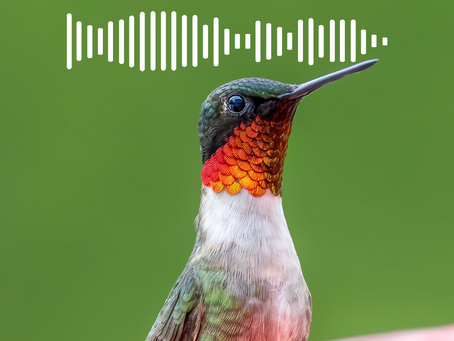ByrdBot: Simulated tweets to communicate climate change
Title: Emergent Sonification: Using Computational Media to Communicate the Anthropocene in ByrdBot
Author(s) and Year: Miles C. Coleman, Brandon Simon, Matt Pierce, and Charles A. Schutte (2023)
Journal: Science Communication (closed access)
TL;DR: Researchers developed ByrdBot, an immersive website that uses emergent sonification to generate artificial soundscapes of bird calls in woods using population data and bird sound recordings. This demonstrates a novel approach to communicating environmental changes caused by human-driven climate change.
Why I chose this paper: I care deeply about climate change communications. My favorite bird is the Puerto Rican parrot, which is critically endangered due to the loss of its habitat. Less than 500 of these species currently roam the island’s tropical rain forests. Developing novel media forms, such as emergent sonification, can help communicate the adverse effects of human activities on fauna populations, even those that aren’t actively endangered.
The world is losing its birds at an alarming rate due to habitat loss and climate change. Bird populations in North America have decreased by around 30% in the past fifty years. That’s nearly 3 billion birds in less time than the average human lifespan.
This decrease in bird numbers is just one of the many negative consequences of climate change caused by increased human impact on the Earth’s ecosystems. Some scientists believe that the drastic impact humans have on the planet, mainly through the use of fossil fuels and the expansion of large-scale agriculture, should mark a new geological time period, the Anthropocene. But climate change doesn’t happen overnight.
Communicating the long-term and incremental effects of human impact is often difficult. Given this challenge, researchers from Rowan University in Glassboro, New Jersey, wanted to find a way to integrate data surrounding bird populations and novel media forms to convey the idea of environments changing due to human impact.
How to“hear” statistics
Data sonification is the process of translating data into sound. Beyond proving helpful in communicating scientific data for broader audiences, it can also summarize highly complex data into a more meaningful medium.
Coleman and colleagues developed ByrdBot, a website that sources bird sounds from the Cornell Lab of Ornithology’s extensive database to simulate what New Jersey woods would sound like at three different points in time: 1970, 2017, and 2065. The idea is to summarize climate change into a single moment, providing the experience of decades of human impact on the environment through the gradual decrease of bird songs.
ByrdBot uses its own spin on sonification: emergent sonification. Like sonification, the idea is to translate quantitative data into sound. However, emergent sonification takes this a step further. It uses computational algorithms involving probability and population statistics to generate unique soundscapes with different bird populations every time the application starts.
Byrdbot picks 10 birds from 61 species to generate an initial “starting” soundscape set in 1970. The software then uses data on the frequency of a given bird species and its current population change rate in the past decades to decide whether or not a given species will theoretically be alive in the year 2065.
This means there are almost one trillion combinations Byrdbot can generate, each resulting in a different experience for the listener.
“Birds, no different than humans, represent bodies with voices—their calls, alarms, and songs are corporeal sounds that invite response on the part of the listener. As such, the aural display of bird population data via the voices of the birds themselves renders that data in such a way as to invite a response on the part of the listener that is emotionally potent, but is also entangled with socially situated understandings of life and living.” – Coleman, 2023
Ultimately the result is, however grim, the same. By 2065, the soundscapes are notably quieter, and much of the diversity of bird species drops by more than half.
Distilling data into “tweets”
ByrdBot offers a unique, immersive sensory experience into the population data of bird species. Its effectiveness in communicating the effects of climate change remains to be seen. Still, it serves as a starting point for using a novel technique, emergent sonification, in communicating complex data regarding climate change. Technology like ByrdBot offers the opportunity to listen to the tweets of the birds no longer with us.
Click here to experience your own unique ByrdBot generated soundscape of the New Jersey woods.
Edited by Scout Barker and Niveen Abi Ghannam
Cover image credit: Skyler Ewing (edited)

